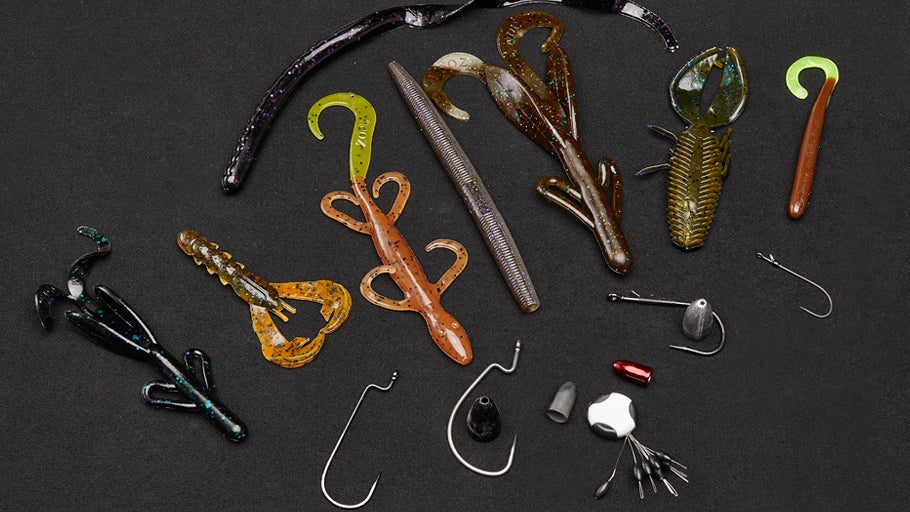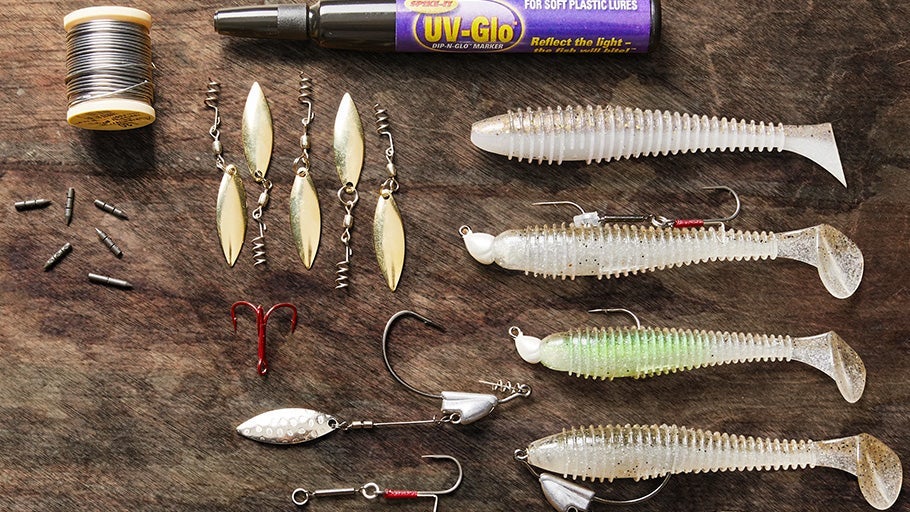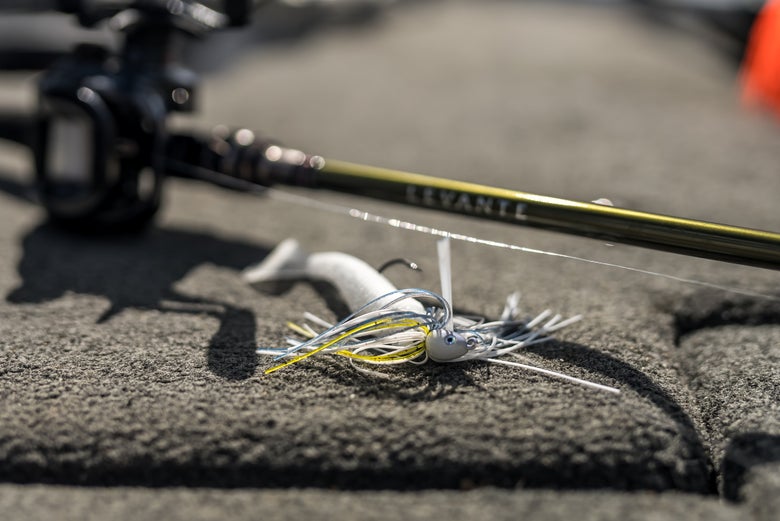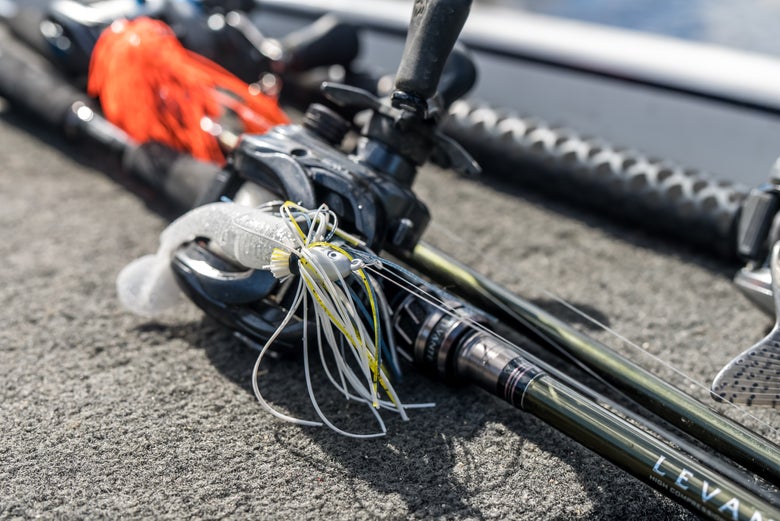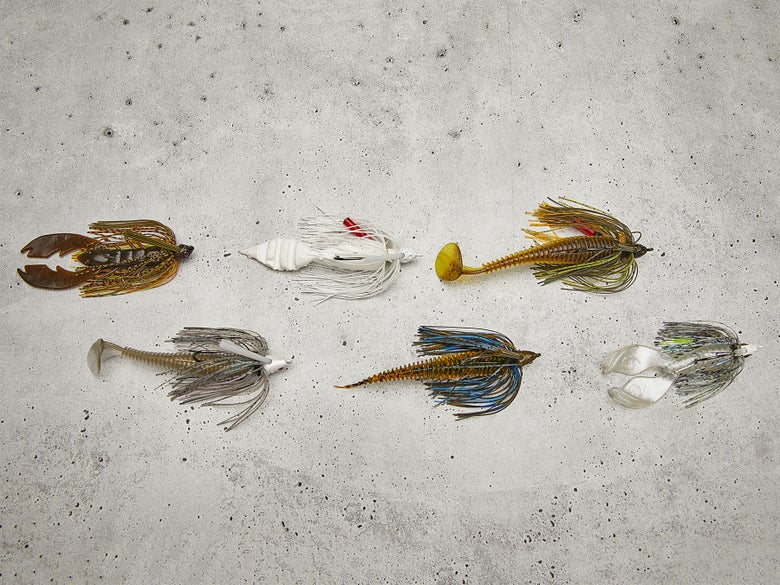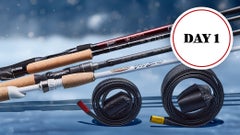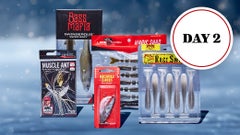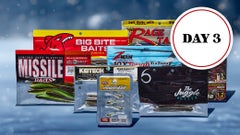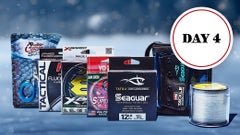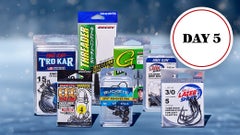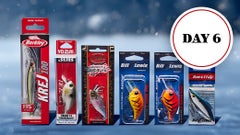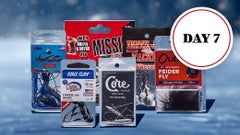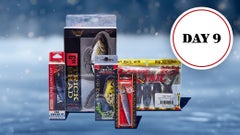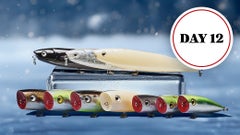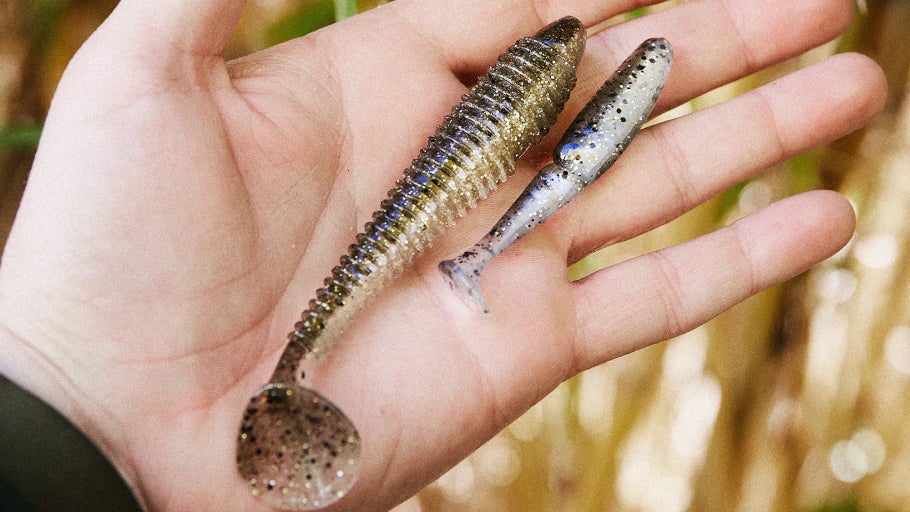
Swim Jig Gear Guide
A more subtle approach than a spinnerbait or bladed jig, the swim jig allows anglers to cover water quickly and build productive patterns in areas choked with aquatic vegetation. Built with a narrow bullet-shaped head so they can slide through cover, swim jigs allow you to fish areas where treble hooks would constantly snag, while enticing vicious reaction bites as they are worked over grass clumps and laydowns. Swim Jigs are an extremely versatile tool for imitating a wide variety of forage and can be paired with virtually any soft plastic to accurately mimic all kinds of bass snacks, like bluegills, baitfish, and crawdads. The goal of this article is to provide some parameters for identifying the ideal setup for fishing swim jigs, discuss soft plastic jig trailer rigging options, and explore trimming modifications that aid in navigating heavy cover.
Swim Jig Rods
For the majority of swim jig presentations, most anglers look to use a medium-heavy or heavy powered casting rod 7’ – 7’6” in length for increased casting distance and plenty of leverage to pull big bass from heavy cover. Rods on the shorter end of this range provide greater accuracy and improved handling when skipping or pitching to targets in close quarters, while a longer rod helps you cast further and cover water more efficiently. If you prefer to shake the rod and keep the tip high during the retrieve, consider using a rod with less backbone and a softer tip so the rod does more of the work and doesn’t wear you out as quickly. Faster tapered rods load quickly to drive home solid hooksets and are typically paired with fluorocarbon, while moderate-fast tapers are often paired with braid and are less responsive but bend further down the blank to keep the fish pinned.
Swim Jig Reels
In most scenarios a standard 100- to 200-size casting reel will be suitable, granted the line capacity meets your requirements. High-speed casting reels that sport a 7:1 gear ratio or faster are typically preferred, as swim jig strikes are often fast and violent, and the increased speed allows you to take up line quickly and get back into position to deliver a hookset. Swim jigs are often fished in depths from 6 inches to 6 feet of water, so you’ll want a speedy reel to help keep your bait high in the water column and ticking along the tops of the submerged cover.
Swim Jig Line
When your lake offers sparse cover and clear to semi-stained water, spool up your favorite fluorocarbon line in the 12- to 20-lb range, and try to stay above the 16-lb mark unless the water clarity necessitates going lighter. If you find yourself working through dense flooded cover and murky waters, you may want to switch to a 40- to 50-lb braided line to capitalize on its ability to rip through grass, weeds, and other vegetation with minimal effort. Another factor to consider when selecting line type is the diameter of the wire on your swim jig hook. Big heavy-gauge swim jig hooks may require the power of a no-stretch braid to get quality hook penetration, while light-wire swim jig hooks may need the slight stretch of fluorocarbon line to prevent bending on a powerful hookset.
Modifications & Rigging
Whether you prefer swimbaits, grubs, creatures, or crawdad imitations, the sky is the limit when it comes to jig trailers. Swim jigs are famous for accurately mimicking a host of different types of forage, including bluegill, shad, crawfish, and more, so you’ll want to keep a variety of trailers on hand to capitalize on their versatility. If you are fishing cold water or want to get your swim jig to fall faster, use trailers with less action, and as the water warms, trailers with more kicking action help your jig stay above submerged grass and vegetation. When skipping your swim jig under docks or overhanging cover, use a flat-bellied jig trailer to provide more surface area for your jig to skip across the water.
Just as important as your selected trailer, the skirt and weedguard can drastically alter your effectiveness and can be modified based on the thickness of the cover. The weedguard should blend a perfect balance of hook protection and flexibility — strong enough to shed weeds effectively, yet light enough to collapse easily so it doesn’t impede your hookset. Try thinning out the weedguard by cutting off some fibers at the base to reduce the stiffness and create a more attractive presentation that will boost your hook-up ratio. A thinned-out skirt helps your swim jig slip through heavy cover easily, so experiment trimming it into layers with the top layer being cut shorter so the skirt flairs out enticingly on every pause or shake of the rod tip.
Best Swim Jig Colors
There are many productive color options on the market for swim jigs, but the two most predominantly utilized color schemes are bluegill and shad patterns. The bulkier profile of a swim jig closely resembles a panfish, so green pumpkin, brown, and black-blue variations are commonly used to better match the hatch, especially when the fish are shallow and spawning. During a shad spawn, white is a deadly choice if the fish are keyed in on baitfish, but if your waters are stacked with crawfish, you may be reaching for a swim jig with some red and orange highlights. Ultimately, the goal is to try and identify what they are feeding on and use that knowledge to your advantage.
Whether you prefer a steady retrieve or the unpredictable action of the Alabama Shake, make sure to always use an erratic retrieve by twitching with the rod tip, pumping the reel handle, or slow rolling until you contact cover. Swim jigs provide opportunities to watch fish follow and eat your bait, so don’t be discouraged if they don’t fully commit, as they help identify high-percentage areas in the lake that you can come back to later with a slower presentation.
Related Articles

